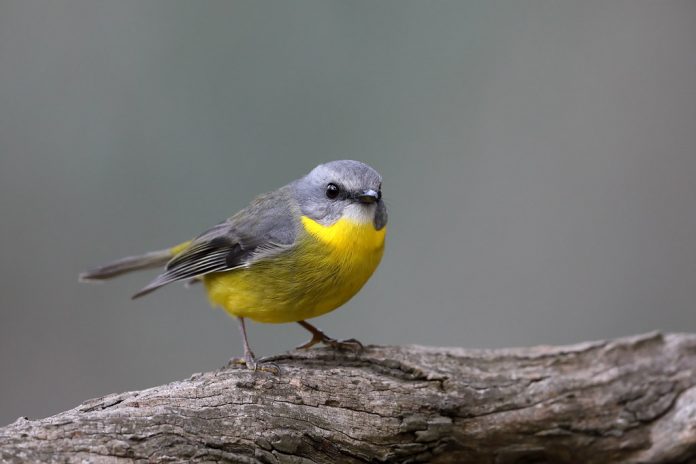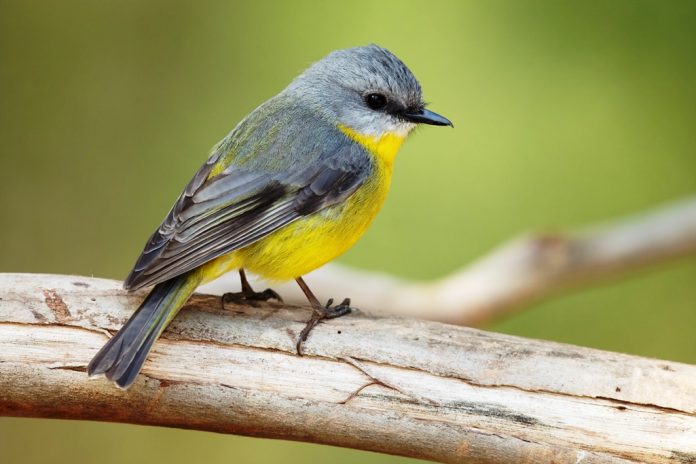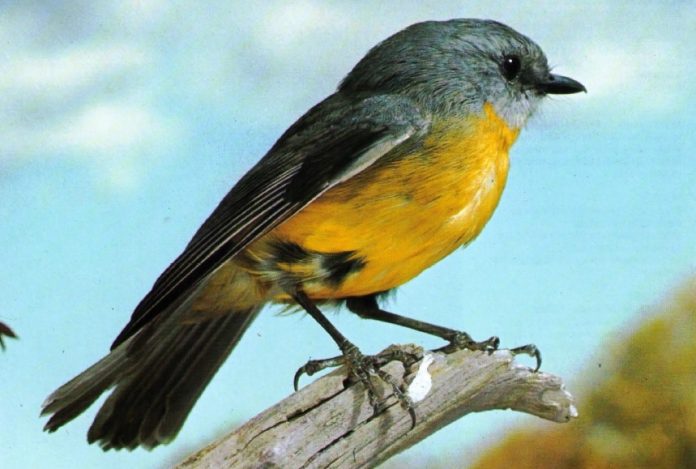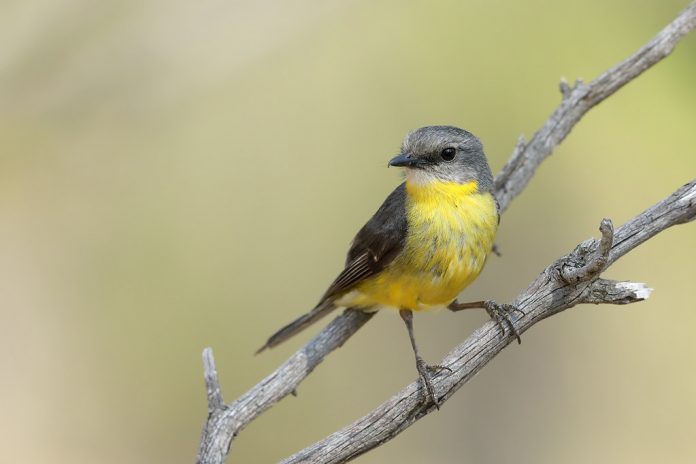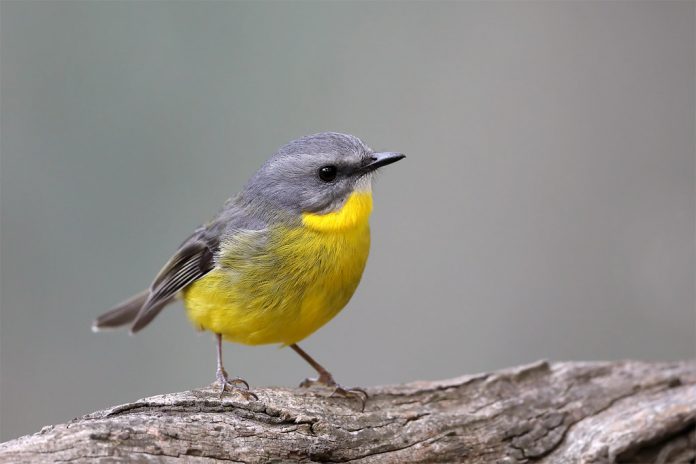Perching sideways on low vertical branches and saplings is the characteristic of the Eastern Yellow Robin (Eopsaltria australis). The yellowest of them all is no exception. At the more open center of the shrubberies in which the birds forage, it gives them a less obstructive view in their hunting. In 1790, the famous ornithologist George Shaw first describe the bird. Its closest species Pale-yellow Robin (Tregellasia capito) found in the central and northeast coasts of Australia in upland subtropical rain forests.
The robins flit quietly from perch to perch, sitting and waiting with tails occasionally rising and wings flicking, then flying on or darting quickly to the ground to pick up prey. They will also capture food in foliage and, rarely, while flying. They seem to start feeding earlier in the day and to continue later than most birds, moving about until dark.
The Eastern Yellow Robin diet includes ants, bugs, spiders, moths, grasshoppers, wasps, and catching flies in flight. In winter the robins frequently join mixed foraging flocks of small insectivorous birds. It is then that they may move locally out from the intimately shrub-bed forests where they breed into more open woodland.
Common to all their habitats is an under-storey of shrubs five-eight meters high with little ground cover. Breeding pairs hold a small restricted territory but may have one or two additional helpers at the nest, most likely previous young, to help feed the nestlings. Up to three broods may be raised in a season.
The female bird takes about a week to build the nest; eggs are laid at about 28-hour intervals, and while she broods, the male feeds her on the nest and later helps in feeding her young. Adults often feign injury to protect the brood. And during the non-breeding season, parents and offspring may forage as a family unit. This is also known as Bark Robin, Creek Robin, and Yellow Bob. This robin is not closely related to American Robin or European Robin.
The size of the Eastern Yellow Robin is about 150-155 mm. Both sexes are similar, but the upper parts are plain mid-gray with olive wash on the back grading from citrine to bright yellow on the rump. Wings and tail darker brown-gray, with a concealed white bar through the base of flight feathers that shows in flight, and narrow white tip to tail. The chin is white; the rest of the underparts are yellow with a faint to absent grey wash on the breast. Normally the eyes are brown with black bills and dusky feet.
The immature is resemble adults but a little duller, molting from juvenile plumage in the first autumn. Juveniles brown above, coarsely mottled and streaked cream-white; white below coarsely mottled brown on throat and breast, with pale mouth streak. Eastern Yellow Robin call is a succession of soft piping notes on the same pitch, by both sexes. The song is explosive chip-chip or k’chilp by the male, in alarm or advertisement. Thus, a series of melodious trilled whistles at dawn.
Nesting and breeding seasons are July-January. The bird builds a nest of a cup shape with bark strips, fine twigs, moss, skeleton leaves, and grass bound with cobwebs, and seldom adorned with hanging strips of camouflaging gray bark. The nest is lined with fibers or grass, 50-75 mm x 30-45 mm deep inside; habitually in the slender fork or low crotch in a tree, mostly below 7-8 m but sometimes up to 25 m.
The bird usually lays, sometimes three; gray-green to pale blue, eggs with red-brown and purple-brown spotting, sometimes evenly distributed, at other times concentrated in a cap at a larger end. The oval shape eggs are about 23 x 16 mm. the incubation period is about 16-17 days, for female birds. However, the young bird fledged in 10-15 days.
The distribution of Eastern Yellow Robin is the coast and ranges of eastern Australia, from Cook Town, Queensland, to southeastern South Australia. Distribution patchy; mainly coastal mountain forests, but ranges through woodland with scrubby cover on inland slopes.
Eastern Yellow Robin is a fairly sedentary bird, but some partial migration from highlands to lowlands in winter, at least in southeastern Australia. There are two races: yellow northern robin (subsp. chrysorrhoa), one north of Hunter River, NSW; and the other south (subsp. australis).
Read More – The Flame Robin (Petroica phoenicea)

